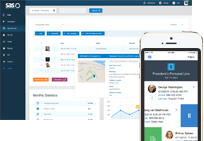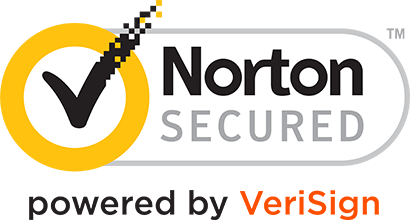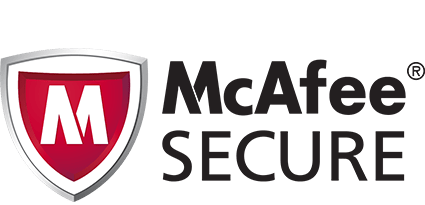- Log In
- Support
- Company
- Contact Us
- Live answers @ 1-888-532-4794
6 Tips for Winterizing Your HVAC Answering Service
The first major snowfall has hit the northeast, and you know what that means. Mother Nature has made the incredible leap from summer to winter, barely skimming fall on her way. For regions of the country that are already frosty and expecting more of the same as the season rolls on, local HVAC providers will see a significant spike in call volume and work orders. If you’re an HVAC small business owner and currently working with an answering service, now is the time to winterize your setup and keep things as straightforward as possible for callers and agents alike. Check out our top 6 tips for an effortless HVAC answering service experience.
#1. Update your pricing, if necessary.
HVAC providers are no strangers to schlepping out in the ice and snow to tackle a job, but that doesn’t mean that working in inclement weather is part of your traditional pricing model. If customers will incur add-on charges for certain types of service calls, whether it’s due to weather or time of day, be sure to update your price list in your answering service FAQs as well as on your website. The last thing you want to do is have incorrect information at agents’ fingertips. This will not only make you look disorganized, but it may give prospective customers the wrong impression that you’re out to upcharge them.
#2. Bulk up your script and FAQs with quick tips for customers and information on your capabilities.
When an HVAC system is on the fritz, some people may be inclined to jump to the worst-case scenario. But having agents ask simple, scripted questions such as, “Have you tried to change the batteries in the thermostat?” or “Do you know when you last replaced the filter?” can help to pinpoint issues without the need for an appointment. In addition, it’s a good idea to update your FAQs to include a list of the services that you offer and those that you don’t, along with specific HVAC models that you specialize in repairing. This will aid in avoiding appointments being scheduled for things that are not on your roster.
#3. Consider outbound calling campaigns to help people prepare for the season.
Once people reach out to an HVAC professional, that typically means that something has gone drastically wrong, and their heat is no longer hot, or the system has just stopped working altogether. While that might result in an overall larger invoice amount for your bottom line, it may create a world of extra labor for your technicians, especially if they have to drive in dangerous conditions. As the cold weather approaches, using an outbound calling campaign to schedule tune-ups will be a big help to homeowners, and customers will appreciate that you’re trying to prevent total equipment failure during the most inopportune times. Whether it’s installing new thermostats, changing filters, or cleaning out ducts, scheduling a little advanced maintenance will ensure a less dramatic season.
#4. Integrate your appointment calendar for fast scheduling.
Speaking of scheduling tune-ups, agents can’t do that without access to your calendar. Because most ISO27001 secure answering services do not allow the use of usernames and passwords to log in to an external system, integrating your calendar software with what your answering service offers will take the hassle out of an endless stream of callbacks and reschedules. If you are not able to integrate your specific software, consider using freeware, such as Google Calendar. Oftentimes, Google can be intermediary so that it is not only accessible for agents, but by linking it to your software, any appointments scheduled by the service will automatically push to the system you’re using.
#5. Update your on-call schedule as far in advance as you can.
When emergencies come in, it won’t do any good for your customers if the answering service is unable to reach your technicians. That means a few things:
- Check your existing on-call schedule, and change it to reflect holiday hours and any rotation that is outside of your typical day-to-day arrangement.
- Add as many on-call contact methods as possible. Beyond having agents reach out to you by phone, include email and text notification so that messages get to you in a timely fashion. This is also proactive in circumstances such as when you’ve forgotten.
- Make sure you listen to voicemail messages, which will allow agents to leave you important details about emergency situations.
#6. Have a plan in place in the event that you are booked.
If it’s a particularly hectic season, you may find that you are fully-extended. This may also be the case if one of your technicians gets hit hard by cold and flu season or if a major winter storm is imminent. What you’ll need to let the answering service know is what to do if there is no room in your appointment calendar for even one more job. If you are the business owner but rely on technicians to handle service calls, then you may need to pitch in and take over, or add yourself to a few shifts. For VIP customers, consider providing them with your direct office line or cell phone number. This way, they won’t be put off by an agent who tells them that you have nothing available for several days. If worse comes to worst, offer an alternative, local HVAC company to contact. Your competitors will appreciate the business, and they’ll be inclined to return the favor, should they find themselves in the same situation.
While nothing is foolproof, the tips outlined above will help you keep your answering service ducks in a row when the real ducks fly south for the winter. And if you need a little direction, contact client services for assistance. They’ll know just what to do to ensure a smooth transition from a lull in customer calls to a flurry of people needing help at the height of the season.
Categories
- Advice (32)
- Answering Service 101 (18)
- Best Practices (10)
- Call Center Jobs (6)
- Call Center Software (20)
- Comparison (2)
- Customer Service (30)
- Funny (31)
- Holidays (19)
- Industry Hacks (19)
- Infographics (53)
- International (1)
- Medical (8)
- News (12)
- Phone Etiquette (2)
- Phones (14)
- Pricing (8)
- Quizzes (3)
- Receptionist (11)
- SAS Products (29)
- Scripting (4)
- Services (5)
- Small Business (25)
- Starting Up (7)
- Tips and Tricks (19)
- Uncategorized (1)
- Videos (19)
- Workplace (6)
Recently writen
- Call Center Script Best Practices: Advanced Script Block Tips to Optimize Your Answering Service
- January 2025 Release Notes – Adjustments to Call Details Timeline, New Scripting Updates, Live Transcription, and more!
- April 2024 Release Notes – Voicemail Greetings, Ability to Access Websites With a Username and Password, and more!
- March 2024 Release Notes – New Add-On, Settings Revamp, and more!
Follow Us
How about a demo?
We'll show you how our web portal works and answer any questions you have about SAS.
Schedule a demo







